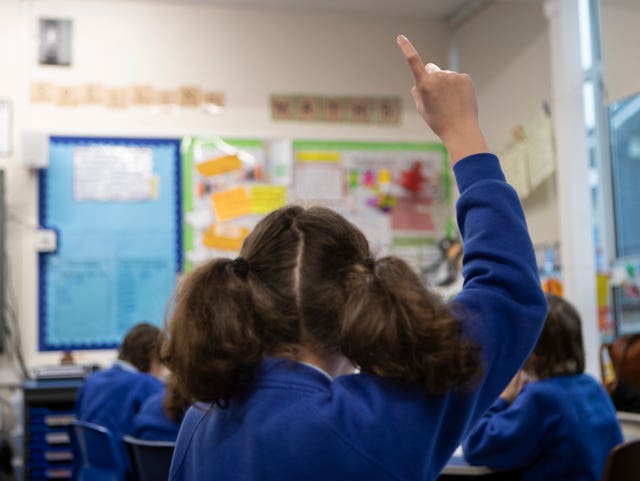Fewer pupils starting primary school this year as more get first choice – survey
Hundreds of thousands of families across England are finding out what primary school they will be joining this autumn.

Fewer children are expected to start primary school in most areas in England this year, but a higher proportion are gaining places at their first choice of school, a survey suggests.
Hundreds of thousands of families across England are finding out what primary school they will be joining this autumn, on what is commonly known as National Offer Day.
Early findings from a PA news agency survey of local authorities show a child’s chances of gaining a place at their preferred school varies significantly depending on where in the country they live.
As of Tuesday afternoon, 45 out of 71 councils in England, excluding London, which reported data saw a rise in children securing their preferred school compared to 2021.

Kensington and Chelsea had the lowest proportion of children getting their top choice at 69.5%, up from 66.4% last year.
Elsewhere in the country, big rises in accepted first choices were in Lincolnshire which saw an increase of just under 10%, as well as Newcastle at 5.47% , Bristol, at 3.37%, and Middlesbrough which was up 3.2%.
Southend-On-Sea, in Essex, saw a rise of just over 4%, Wokingham saw a rise of just under 5% and Bath and North East Somerset rose by 4.67%.
Leicester City Council said a record high 96.3% of children were being offered a place at their first preference.
Meanwhile, a drop of -2.17% from last year was reported in Warwickshire, while figures of -2.08% and -1.72% were seen in South Tyneside and Oxfordshire respectively.
A -2.67% fall recorded in Hartlepool and a drop of just under -5% in Salford were also among the biggest recorded.
Among the areas where high proportions of pupils have achieved their first preference were North East Lincolnshire, where 97.11% got their first pick, and Middlesbrough, which is 98.15%.
Just over 97% of the children in Northumberland had their first choice accepted.
Elsewhere, 87% of children secured their first preference in Hertfordshire, while in Southend-on-Sea, 88.5% got their top choice, despite being up from 85% in 2021.

Most local authorities saw drops in the overall numbers of children granted their first choices due to lower applicants.
Schools in Stoke-on-Trent were among those who reported a lower cohort this year, compared to 2021.
Primary schools in the capital received 89,618 applications in total this year, a 1.3% decrease compared to last year.
Gail Tolley, chair of the Pan-London Admissions Board, said: “Starting primary school for the first time is an important milestone for every child.
“This year the admissions process has gone smoothly and nearly 88,000 parents will receive an offer of a preferred school place in the capital – with almost 79,000 of those being for their first preference school.
“London boroughs are working effectively with local primary schools and other partners across the capital to ensure school places are available where needed, as demand can vary even within individual boroughs.”
Paul Whiteman, general secretary of school leaders’ union NAHT, which represents the majority of primary school leaders in England, said: “This can be an anxious time for families. Choosing the right school and securing a place there is a huge moment in a child’s life and not everyone will get their first choice today.
“Support must be in place for families to navigate what can be a daunting process. For those families not getting their first choice of school, the appeals process will be going ahead.”
A Local Government Association spokesperson said: “Choosing the right school for your child is one of the most important things a parent will do and this time of year can be extremely stressful. Everyone wants their child in a school where they can be happy, safe and reach their full potential.
“Councils have also responded to increasing demand with the creation of hundreds of thousands of new places in recent years. This is a demonstrable record that they are doing everything they can to rise to the challenge of ensuring no child goes without a place.”





